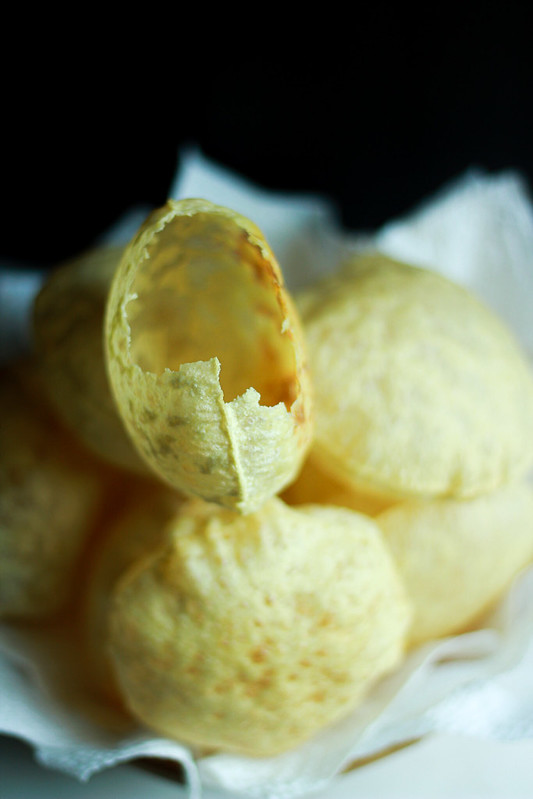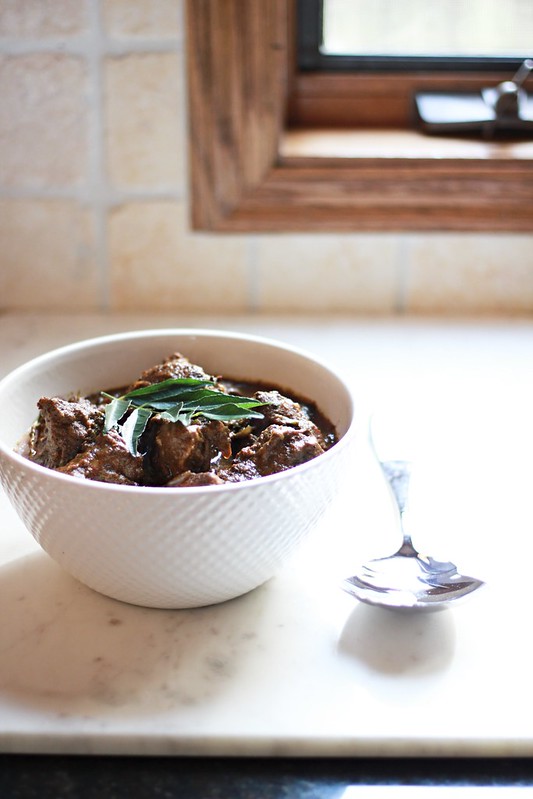 |
 |
Making Croissants can come across as something that's hard to achieve at home, especially for a first-timer. In my opinion, it's not difficult if you pay close attention to details. And when I say that, I really mean it. There are no two ways about it. Every step matters if you want to have a consistent product each time, like how it's mentioned in the recipe. It's not a recipe where you can add or take away things during the process. When you read through the recipe, it might sound super length-y. It's actually the most easiest process but attention to detail, like how I mentioned before, if the key.
 |
So you begin the process two days prior to the actual baking and eating day. On day one, you make the dough and butter block. On day two, you bring the two together and do all the folding. On day three, you bake and eat it! The active time in making Croissants is very little. You just do a little each day and the dough is resting in the fridge for the most part of it. One of the important steps is to make sure that the dough and butter block that you make on day one, is of the same consistency / feel when you are about to do the folding on day two. Butter should feel as pliable as the dough, thaw if need be.Why is it important? It's because if the butter block is hard and the dough is soft, it will break up while you fold. You don't want to take any chances of the having a butter leakage at any point. If you do, stop what you are doing and let the dough chill for a 10-15 minutes. You might get tested for patience, if you are doing this on a hot, humid day.
 |
Try to get the best possible butter that you can lay your hands on. The more fat content it has, the better is is! I used a block of unsalted butter from Hope Creamery, Minnesota. I love their butter! Croissants are best eaten warm but there's not harm in freezing fresh ones and warming it up in a toasty oven later. It will still be good. This recipe is from Weekend Bakery, a blog I came across on Pinterest a few months ago. I pinned it to try later and here I am! It will look lengthy but I promise you, it's not that long when you do it. Just be sure that you follow the instructions. , including the measurements!
 |
CROISSANTS
Makes 15
Ingredients:
500 grams all-purpose flour
140 milliliters water
140 milliliters milk (cold milk is ok)
55 grams sugar
40 grams unsalted butter
11 grams instant yeast
12 grams salt
280 grams unsalted butter, cold
1 egg yolk + 1 teaspoon water, for egg wash
Method:
Day 1 : Making the dough
Mix all the ingredients together from flour through salt on low to medium speed for 3 minutes until it all comes together to form a dough with a low stage of gluten development. You are not looking for windowpane here, the dough will fight back when you roll. Shape the dough into a disc, wrap and chill in the fridge overnight.
Day 2: Laminating the dough
Cut the cold butter into 1.25 cm thick slabs. Arrange the pieces on parchment paper to form a 15 x 15 cm square. Place another piece of parchment paper over it and pound the butter gently using a rolling pin to flatten it to a 19 x 19 cm square. Trim the sides to straighten it and place the trimmings on top of the square and flatten it again to form a 17 x 17 square. Wrap and chill until needed.
Roll out the chilled dough on a lightly floured surface to 26 x 26 cms square with straight sides and even thickness. Take the butter out of the fridge. Place the dough square with one side facing towards you. Place the butter block over it at a 45 degree angle so that a point of the butter is facing towards you.Fold a flap of the square dough over the butter, so that the point of the dough reaches the centre of the butter. Repeat with other three sides. The edges of the dough flap should slightly overlap to enclose the butter fully. With the palm of your hands, lightly press the edges to seal the seams.
On a lightly floured surface, roll the dough out from the center to form a rectangle of 20 x 60 cms. Aim at lengthening the dough and not widening it, keeping the sides straight. Fold the dough letter style, folding the top 1/3 portion towards the center and folding the lower 1/3 rd portion over it. Cover and let it chill for 30 minutes. Repeat the process two more time, rolling out the dough to 20 x 60 cms each time. After each turn, turn the dough 90 degrees before you roll again. After the 3rd turn, cover and chill the dough in the fridge till Day 3.
If the rolling gets tough at any point, let the dough relax in the fridge for 20-30 minutes.
Day 3: Dividing the dough
Take the chilled dough from the fridge and roll it out to 20 x 110 cms on a lightly floured surface. Do not stretch the dough, just roll it gently. If it fights back, fold it letter style, cover and chill for 20 minutes. It took three rounds for me to roll it out that long.
Once the dough is fully rolled out, gently lift from the sides to let it shrink naturally. Your strip of dough should be long enough to let you trim the sides and still be 100 cms long.
Shaping the dough
Take a tape measure and mark 12.5 cms intervals at the top of the dough ( 7 marks in total). At the bottom, make a mark at 6.25 cms. Then continue to mark at 12.5 cms intervals (8 marks in total). Top and bottom lines will not match and will form the base of the triangles. Make diagonal cuts using a pizza wheel from the top mark to the bottom mark. Continue this for the length of the dough. Change the direction and cut the opposite way for the length of the dough. You will have 15 triangles and a few odd shapes of dough.
Using your pizza wheel, gently make a 1.5 cms notch in the centre of the short side of the triangle. Now, gently elongate the triangle to 25 cms. You can use a rolling pin for the same.
After you cut the notch in the short end of the triangle,try and roll the two wings by moving the hands to the center, creating the desired shape with a thinner, longer point. Try and roll the dough very tight in the beginning and use just enough pressure to make the dough stick together (don't squish it!)
Proofing & baking
Place the shaped croissants on a baking sheet with enough space between them . Whisk together the egg yolk and water and brush a thin coat over the croissants. Let them proof in a draft-free space with an ideal temperature of 24 C -26 C. It will take about 2 hours. You should be able to tell if they are ready by carefully shaking the baking tin and see if the croissants slightly wiggle. You should be able to see the layers of the dough from the side.
Preheat the oven to 200 C / 390 F convection or 220 C/ 430 F convectional oven.
Right before baking, give the croissants a second thin coating of egg wash. Bake them for 18-20. It's best eaten warm. You can reheat frozen ones at 180 C/ 350F for 8 minutes straight from the freezer.
Enjoy!
I rolled the dough scraps with chocolate and baked them along with Croissants.
Try making Croissants on a relatively cooler day, it save you some trouble!
If I didn't scare you, what are you waiting for? Get baking! When I was working at Hyatt Regency, Minneapolis as a Pastry Assistant, we would fill our Croissants with Nutella just before serving. Just poke a hole in the bottom of the Croissant and fill Nutella with the help of a piping bag. Dust some icing sugar over the top and enjoy it with some hot coffee!
You can find the step-by-step instructions with photographs on my Instagram profile.










